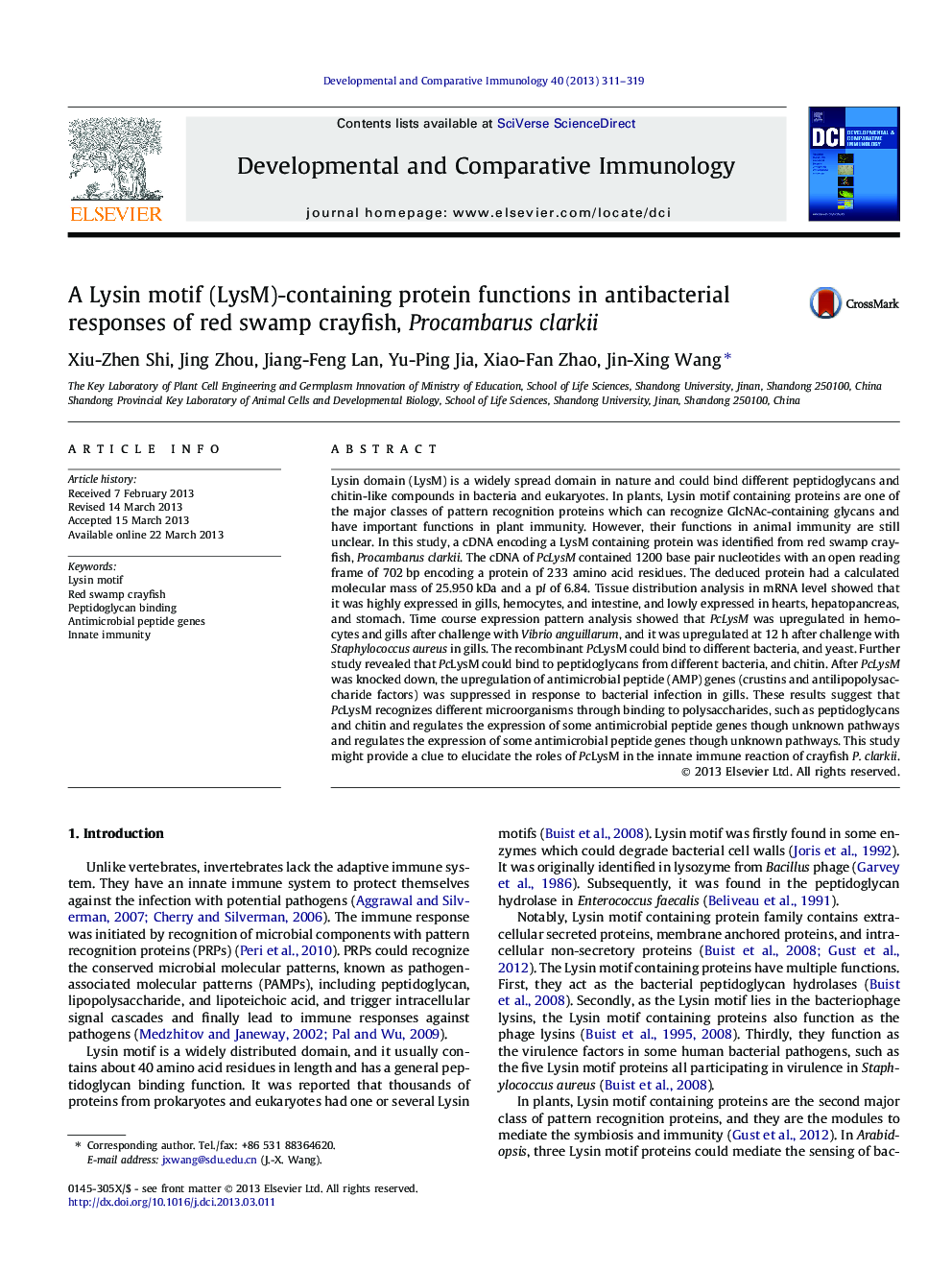| کد مقاله | کد نشریه | سال انتشار | مقاله انگلیسی | نسخه تمام متن |
|---|---|---|---|---|
| 2429070 | 1553579 | 2013 | 9 صفحه PDF | دانلود رایگان |

• Identifiying a cDNA coding for Lysin motif containing protein (PcLysM) from crayfish.
• The transcription of PcLysM was upregulated by V. anguillarum and S. aureus.
• PcLysM could bind to bacteria and yeast.
• It could bind to peptidoglycans from different bacteria, and chitin.
• PcLysM might function in antibacterial innate immunity of the crayfish P. clarkii.
Lysin domain (LysM) is a widely spread domain in nature and could bind different peptidoglycans and chitin-like compounds in bacteria and eukaryotes. In plants, Lysin motif containing proteins are one of the major classes of pattern recognition proteins which can recognize GlcNAc-containing glycans and have important functions in plant immunity. However, their functions in animal immunity are still unclear. In this study, a cDNA encoding a LysM containing protein was identified from red swamp crayfish, Procambarus clarkii. The cDNA of PcLysM contained 1200 base pair nucleotides with an open reading frame of 702 bp encoding a protein of 233 amino acid residues. The deduced protein had a calculated molecular mass of 25.950 kDa and a pI of 6.84. Tissue distribution analysis in mRNA level showed that it was highly expressed in gills, hemocytes, and intestine, and lowly expressed in hearts, hepatopancreas, and stomach. Time course expression pattern analysis showed that PcLysM was upregulated in hemocytes and gills after challenge with Vibrio anguillarum, and it was upregulated at 12 h after challenge with Staphylococcus aureus in gills. The recombinant PcLysM could bind to different bacteria, and yeast. Further study revealed that PcLysM could bind to peptidoglycans from different bacteria, and chitin. After PcLysM was knocked down, the upregulation of antimicrobial peptide (AMP) genes (crustins and antilipopolysaccharide factors) was suppressed in response to bacterial infection in gills. These results suggest that PcLysM recognizes different microorganisms through binding to polysaccharides, such as peptidoglycans and chitin and regulates the expression of some antimicrobial peptide genes though unknown pathways and regulates the expression of some antimicrobial peptide genes though unknown pathways. This study might provide a clue to elucidate the roles of PcLysM in the innate immune reaction of crayfish P. clarkii.
Journal: Developmental & Comparative Immunology - Volume 40, Issues 3–4, July–August 2013, Pages 311–319